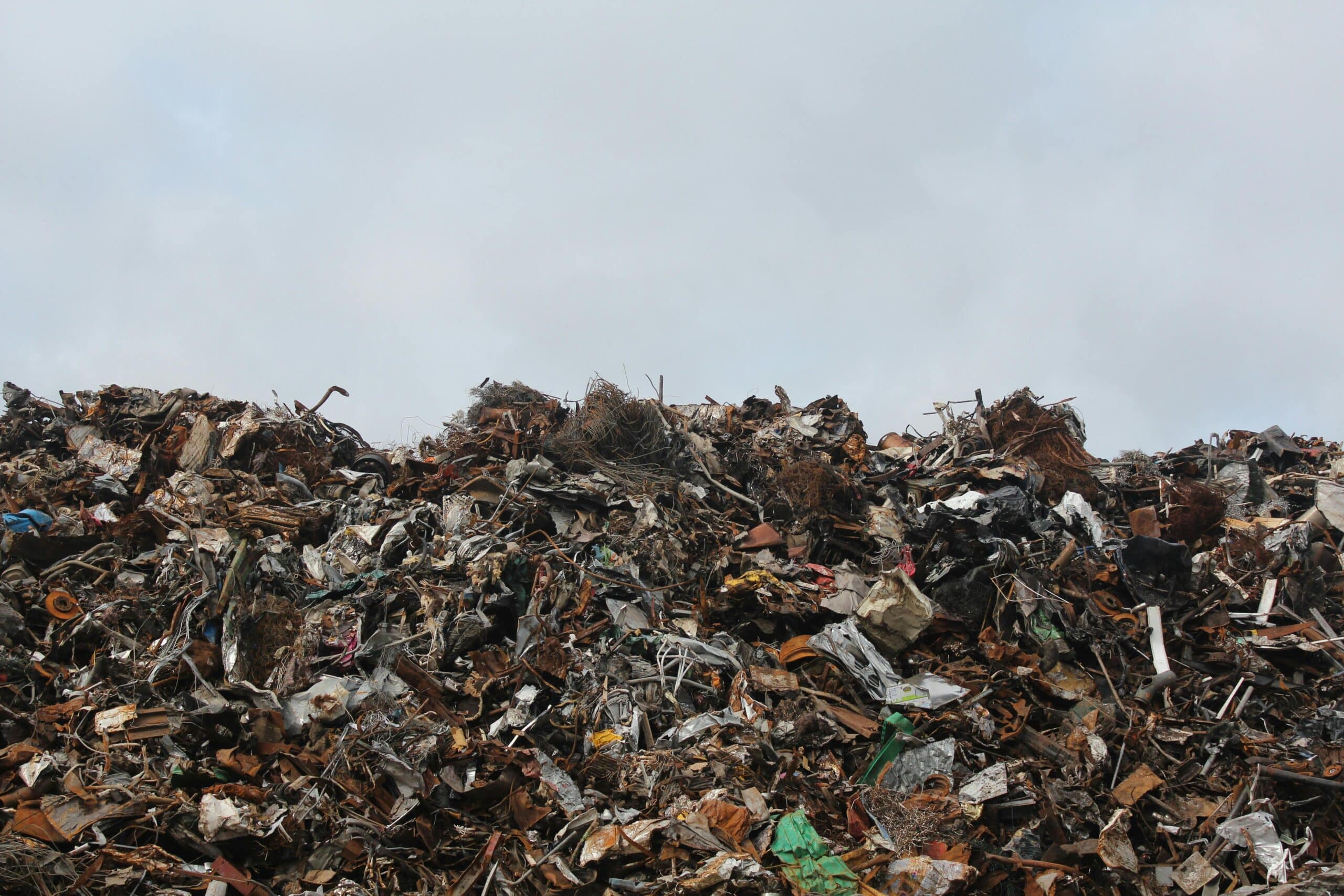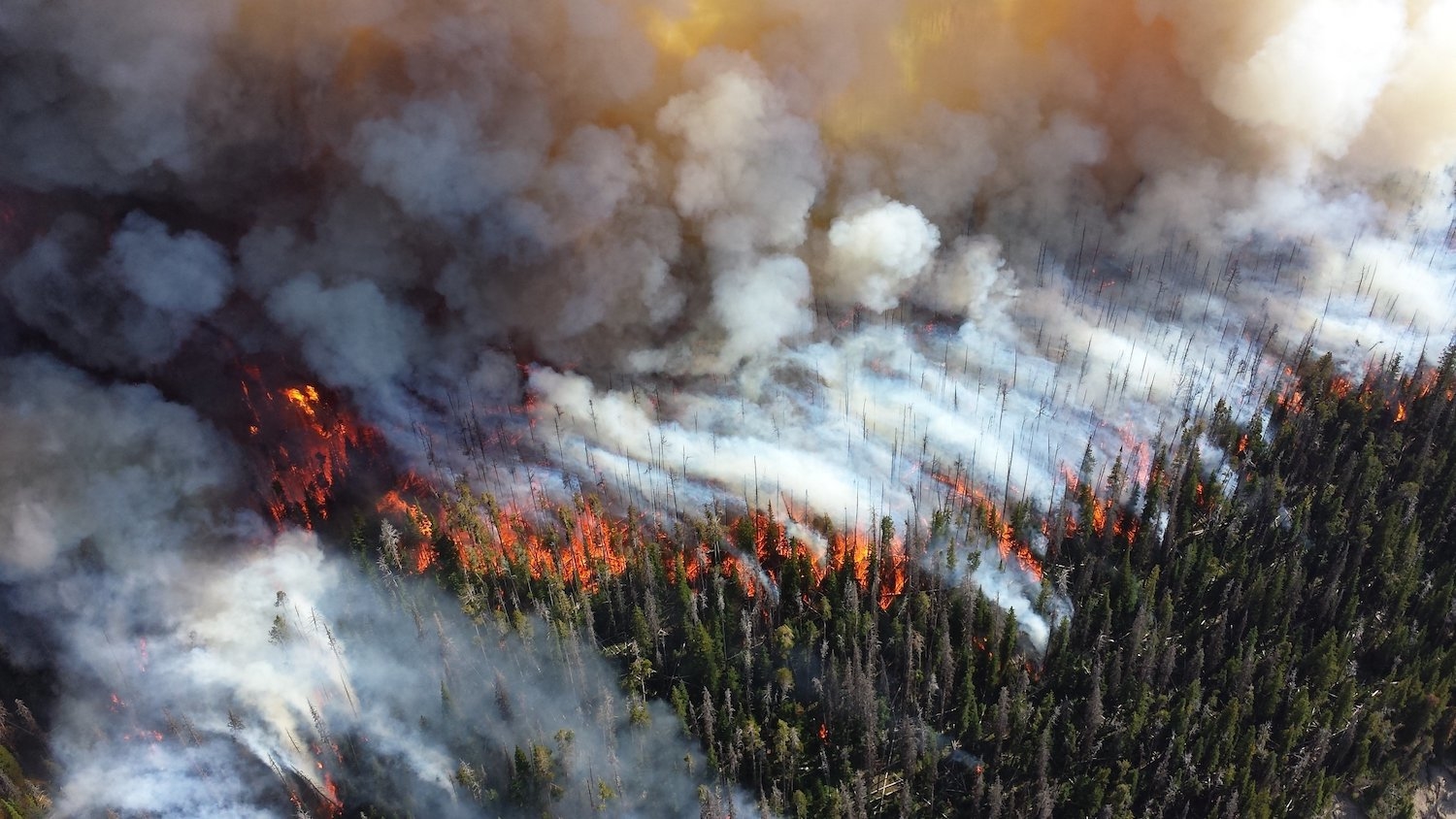Exploring the Deep Sea: Adventures of a Researcher in the Field
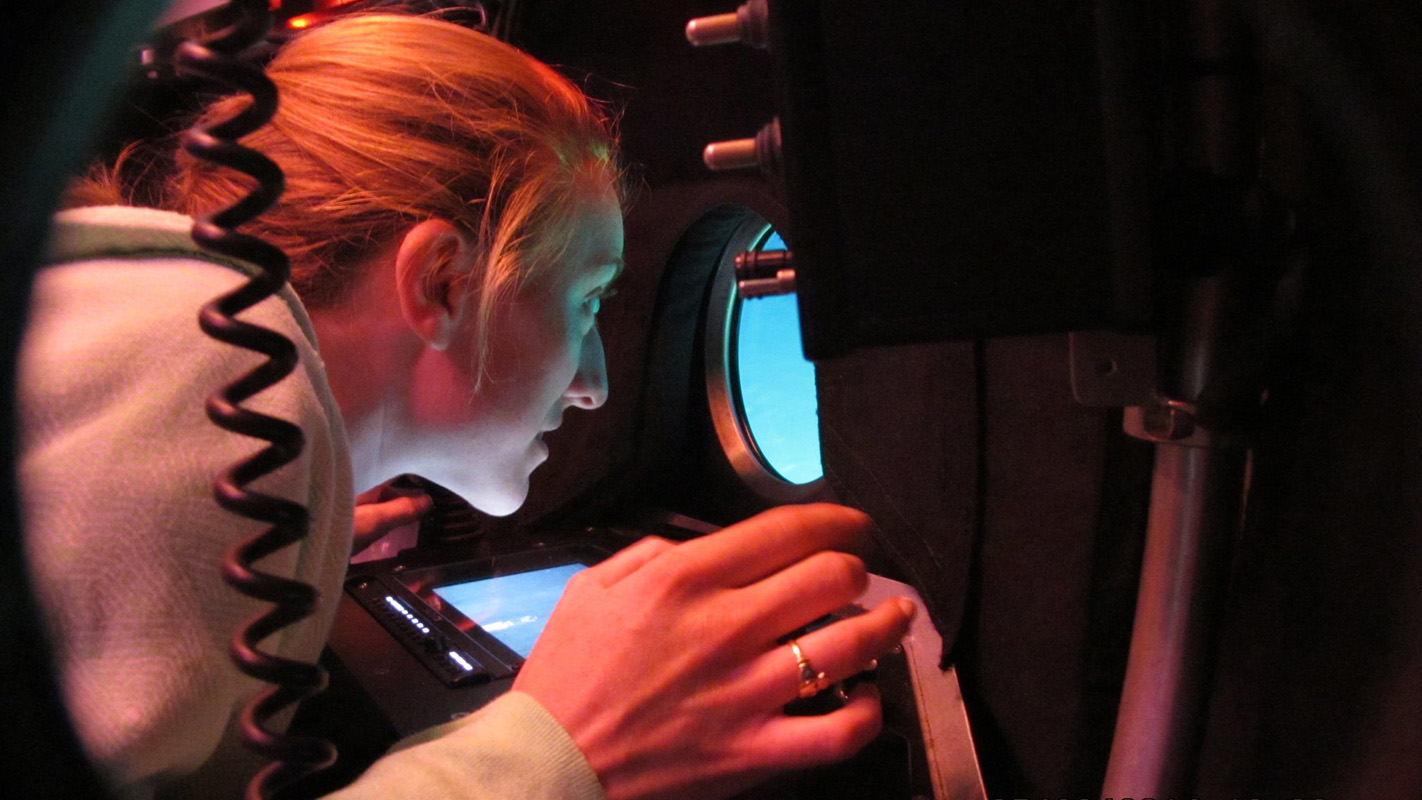
For centuries, scientists thought that all life depended on the sun. They were wrong. Far beneath the surface of the sea, in places that have never been touched by sunlight, there are entire ecosystems that derive their energy from methane that seeps up out of the sea floor.
Researchers are still learning about these habitats and the web of living things that they support. One of the scientists, Doreen McVeigh, is a Ph.D. student at NC State. She’s had the opportunity to visit one of these deep-water sites in a submersible research vehicle called Alvin.
To learn more about McVeigh’s research, and what it’s like to work thousands of feet underwater, check out our Q&A. [Editor’s note: this is the latest entry in a periodic series on the adventures of researchers in the field.]
The Abstract: What does your research focus on?
Doreen McVeigh: The goal of my research is to quantify the relative importance of biological and physical factors on four deep-sea invertebrates: tubeworms, snails, clams, and mussels. The young larvae use a variety of dispersal strategies, such as swimming to shallower waters or close to the sea floor. Additional differences such as location and timing of spawning can also influence dispersal between methane seep sites in the Caribbean, Gulf of Mexico, and along the U.S. East Coast.
TA: What drew you to that subject, and why do you think it’s important?
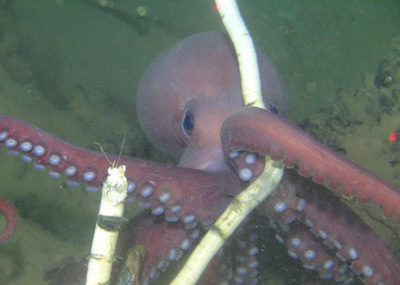
McVeigh: I’ve always been fascinated by the way organisms move in the ocean and travel great distances, which is an exciting and challenging aspect to study for many marine organisms. I want to understand how behavior, biology, and the physical environment influence a larvae’s journey to new habitats.
There are several commercially valuable organisms that rely on successful dispersal to suitable habitats, such as lobster, snapper, and swordfish. I am working with a team of other researchers, including Roy He and my advisor, Dave Eggleston, to collect data and develop a computer model that accurately simulates larval behavior and realistic ocean conditions. This model could provide great insight into potential habitats to monitor or protect. Research on dispersal and migratory patterns of marine creatures is extremely valuable and critical to our understanding of how organisms move throughout the sea.
TA: What sort of equipment do you use to collect information about these deep-sea communities?
McVeigh: We use a suite of equipment to gather data on deep-sea communities and the surrounding environment. Long-term data collection involves a series of instruments connected to each other in a mooring. In oceanography, a mooring is a collection of scientific instruments connected by a chain, suspended in the water by a buoy and weighted to the sea floor. These instruments record the temperature of the water, the direction and speed of the currents, and the sounds of the deep-sea. They also trap larvae. Direct specimen collection and observations are made with the submersible Alvin. Sentry, a remotely operated vehicle, generates maps and photos of the sea floor. These tools enable scientists to make exciting discoveries with every dive!
TA: I know that Alvin is based out of the Woods Hole Oceanographic Institution, but where are you actually making the dives? How deep are these research sites – and how deep can Alvin go?
McVeigh: Our research is focused in the Intra-American Sea, which is comprised of the Caribbean Sea, Gulf of Mexico, and the U.S. East Coast. Several moorings have been deployed and retrieved throughout the Intra-American Sea thanks to the dedicated crew on research vessels. Our sites vary in depth, with the deepest off the coast of Florida at 3,300 meters [just over two miles], and the shallowest at around 600 meters [almost 2,000 feet]. Alvin can dive to 4,500 meters, and after the second round of renovation, it is likely the sub can explore deeper depths.
Alvin just recently celebrated its 50th birthday, and underwent the first round of renovations from 2011-2013. There are now five windows, increased interior space, lighting and navigation systems. The second level of renovation enables Alvin to dive to 6,500 meters, or 4 miles, and explore even more of the deep sea.
TA: How long does it take you to reach the ocean floor?
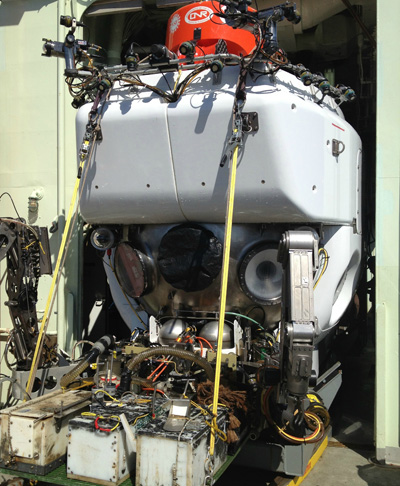
McVeigh: Travel time to the ocean floor is dependent on depth, and for my dive it took approximately 2 hours to reach 1,000 meters.
TA: How quickly does it become completely dark underwater?
McVeigh: It’s difficult to pinpoint the exact moment it becomes dark, as light attenuation in the ocean depends on a lot of physical and environmental conditions. On a bright summer day with calm winds in the Gulf of Mexico, it was dark about an hour into our journey to the ocean floor.
TA: Do you sometimes see fish or other sea life while you’re descending?
McVeigh: A lot of zooplankton can be seen outside the portals. Zooplankton are small animals that live in the water column and may be observed during a descent. Other scientists have seen fish and octopus swim past the sub as it sinks to the sea floor. It’s always exciting!
TA: How many times have been on a research dive in Alvin?
McVeigh: I’ve had the fortunate experience to make one Alvin dive in the Gulf of Mexico at around 1,000 meters. Our team has another research cruise scheduled this summer off the U.S. East Coast, and hopefully I’ll be able to participate in another dive! A dive in Alvin to explore the ocean floor is like going to another planet—an observer never has the same dive experience twice.
TA: How many people fit into Alvin, and are you sitting or standing or what?
McVeigh: A total of three people can fit inside Alvin: one pilot and two observers. The pilot sits on a chair with their body tilted toward the center window, while the two observers are on either side of the pilot with their backs to the window, and legs stretched out in front of them. Imagine laying on a cushioned stadium bench—that’s about as wide as the seats are for observers. Now imagine doing that for 5 hours at 1,000 meters depth in near total darkness. Observers don’t look out the window, and instead use video cameras mounted on Alvin to record the deep-sea creatures and habitats. Only one person can stand at a time, which is usually to answer nature’s call.
TA: Do you ever get claustrophobic?
McVeigh: Never felt claustrophobic in Alvin—it’s one of the few instances as an oceanographer when a small frame works in my favor, as I fit very comfortably in the submersible.
TA: What sort of information are you focused on collecting? And are you collecting samples or solely making visual assessments?
McVeigh: Each Alvin dive has very specific goals to achieve on the sea floor, and every effort is made by the observers to accomplish their task before resurfacing. While the specific goals vary with every dive, generally the goal is to collect our primary research specimens (tubeworms, mussels, clams, and snails), sediment cores, water samples, and slurps of bacterial mats. The cameras are constantly recording, so the observers must be accomplished multi-taskers to keep track of it all.
TA: Why is the information you’re collecting important?
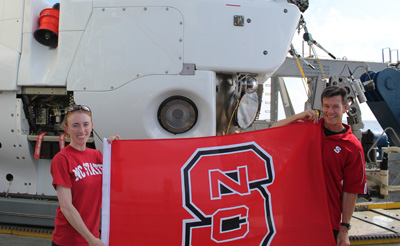
McVeigh: Our knowledge of the deep-sea is still in its early stages, and there is so much to learn and discover about biological and physical phenomena occurring at depth. Analyzing all the data would be a monumental task for one lab, and so our work is a multi-institutional project, with the top scientists in several fields all working together to enhance our understanding of life in the deep sea. The data and specimens are shared, and we all work to address different hypotheses about methane seeps with the ultimate goal of furthering our knowledge of life in extreme environments.
TA: How much time do you have to do actual research at the bottom, before having to resurface?
McVeigh: Actual bottom time is dependent on the depth of the research site, but typically there is about 5 hours to explore the sea floor.
TA: Does it take the same amount of time to reach the surface as it does to reach the bottom?
McVeigh: While I don’t have the exact descent and ascent rates, it generally takes the same amount of time to reach the bottom and resurface. Alvin uses metal weights as a sinking aid and drops the weights at the end of the dive. The pilot can adjust the ascent rate by dropping more weights, and throughout the ascent they communicate with the ship.
TA: So, including the time you need to reach the bottom, do the research, and resurface, you’re in the sub for a long time. Can you eat in the sub – and what do you do if you have to use the bathroom?
McVeigh: We have a sub lunch. The crew very kindly packs two sandwiches—I seem to recall a peanut butter and jelly sandwich and a ham sandwich. They also pack coffee, water, and chocolate for the observers and pilot should anyone need it.
There’s absolutely no privacy in the sub, so leave your modesty at the surface! Each person in the sub has a H.E.R.E. bottle, or Human Endurance Range Extender, to use when nature calls. It’s a red bottle with a long neck, and for women there’s an attachment to make it a little easier to urinate standing upright.
TA: How long can Alvin stay underwater – and what happens if the sub loses power or gets stuck?
McVeigh: Most dives are five hours. Alvin has a great safety record, but if something happened to the sub, there is enough oxygen to last a few days. The pilots are the most well qualified individuals with rigorous training in emergency situations, so I personally feel very safe in the submersible. The observers are also taught what to do in the event of an emergency, which makes us as safe as possible on a dive.
TA: What’s the most interesting thing you’ve seen on a research dive?
McVeigh: The chimaera is a cartilaginous fish, whose closest living relative is the shark. Many chimaera are peculiar looking fishes with large heads, rabbit-like eyes, flat plate-like teeth, and long tails. It was such a magnificent sight to see this beautiful creature swimming past the sub!
TA: Is there anything about deep-sea diving that was a surprise to you – something you really weren’t expecting?
McVeigh: I’ve spent years reading scientific literature and studying organisms that live in the deep-sea, and yet I was awe-struck by the life we encountered on my first Alvin dive. There’s such an abundance of life in these delicate deep-sea ecosystems, and the dive impressed upon me the fragile nature of these habitats. My perspective on the deep-sea permanently changed on that dive, and I have a much greater appreciation for the delicacy of life in these extreme environments, and why it is so important to understand life in the deep sea.
- Categories:

